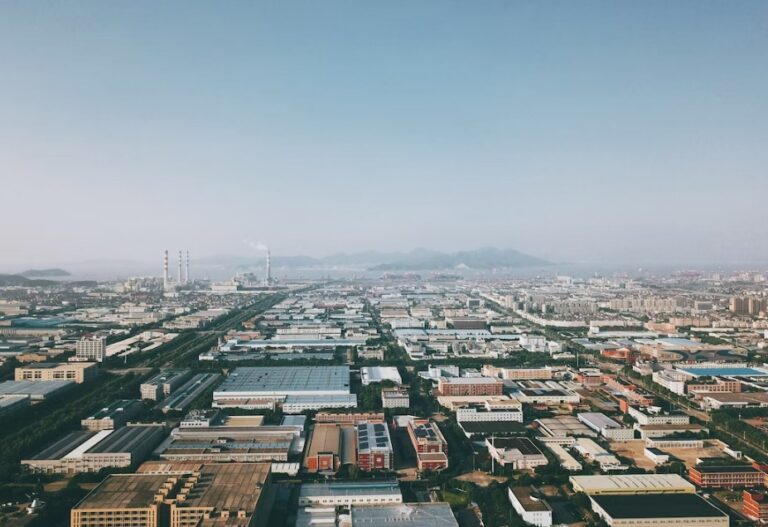Over the past few decades, there have been considerable shifts in the capacity of manufacturing countries, with numerous countries rising to prominence.
Countries with strong manufacturing capabilities have emerged as global powerhouses, excelling in areas such as output, exports, and new product development as their economies have expanded and technology has advanced.
This article inquires into the top six manufacturing countries in the world, emphasizing their basic industries, contributions to global manufacturing, and factors that drive their success.
Table of Contents
The 6 top manufacturing countries
1. China
Located in East Asia, China has become the undisputed leader in global manufacturing. With a population of close to 1.4 billion, it is among the world’s most populated and oldest nations.
China has a large manufacturing sector that includes many different industries, such as textiles, electronics, automobiles, and machinery, thanks to its large population and rapidly expanding skilled labor force.
Manufacturing output in China accounts for 28.7% of the world total. In 2019, this contributed roughly $4 trillion to the nation’s GDP. Multinational corporations have found the country’s low-cost labor and favourable business environment attractive.
The government of China has made substantial investments in both infrastructure and technology, which have helped the country maintain its position as the world’s manufacturing powerhouse.
2. United States
Even while the United States’ manufacturing sector faces increasing competition from emerging economies, it still ranks among the world’s top five. The manufacturing sector contributes significantly to the U.S. economy, accounting for 16.8% of the total global output for manufacturing.
The nation’s manufacturing strength originates in its cutting-edge technology, robust R&D, and talented labor force. When it comes to aircraft, defense, pharmaceuticals, and technology, the United States is unrivaled worldwide.
The country’s focus on new technologies and automation has also contributed to rising levels of productivity and international prominence.
3. Germany
Germany has a longstanding reputation as a global leader in the fields of high-quality manufacturing and precise engineering. Home to over eighty-three million people, the country is now a major global trading power.
5.3% of the total global output for manufacturing comes from the consumer goods and business sectors, both of which benefit from the free market ideology promoted by the country’s economy. The words “Made in Germany” have come to stand for quality and durability.
Manufacturing automobiles, industrial equipment, and machinery are all areas in which Germany excels. With a dedicated focus on R&D and a highly skilled labor force, the country has been able to keep a leading position in the global manufacturing sector.
4. Japan
Japanese factories are known for their dedication to efficiency and innovation, as well as their culture of constant development. Japan, an East Asian island nation in the northwest Pacific Ocean, is home to around 126 million people. It accounts for 7.5% of total manufactured production worldwide.
Japan has a plethora of internationally renowned cultural exports, including but not limited to arts and crafts, animation, music, cuisine, and many others. Metals including steel, iron, copper, and semiconductors, as well as consumer electronics and autos, computers, and robotics, have made the country a global powerhouse.
The quality and dependability of items made by Japanese companies have long been recognized as among the best in the world. Its dedication to cutting-edge technology and automation has been crucial to its success as a global manufacturing leader. Japan has shown to be a trustworthy manufacturing partner for growing businesses.
Read also: The 7 most technologically advanced countries in the world
5. South Korea
The meteoric growth of the South Korean industry to global prominence is truly astounding. With an emphasis on technology and the service sector, South Korea has become one of the world’s fastest-developing nations.
3% of the world’s total manufacturing output comes from South Korea. South koreans manufacturers like Samsung and LG have expanded into other product categories, making them household names throughout the world. Oil, electricity, gas, hydrocarbons, and coal make up the bulk of its imports.
The nation’s industrial industry has reached new heights because of the country’s dedication to R&D and its trained workforce.
6. India
The manufacturing industry in India has expanded rapidly in recent years, elevating the country to a world-class status. It has developed into a trustworthy nation in a variety of economic spheres. India has the population and resources necessary, with over 1.3 billion people.
India contributes 3.1% of global manufacturing output. Manufacturing textiles and garments, pharmaceuticals, and automobile parts are the country’s strong suits.
Factors such as India’s large pool of skilled workers, improving demographic trends, and government efforts like “Made in India” have helped to increase the country’s manufacturing capacity and draw in foreign investment.
The future of the manufacturing sector
There is constant change in the industrial sector as countries work to increase their technological prowess and competitiveness. The aforementioned countries are major contributors to global production and trade because they have established themselves as industry leaders.
The availability of trained workers, cutting-edge tools, innovative study, and supportive government regulations are all major contributors to their success. There is no doubt that these countries will continue to shape the future of manufacturing as the global economy develops.












